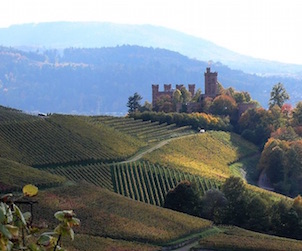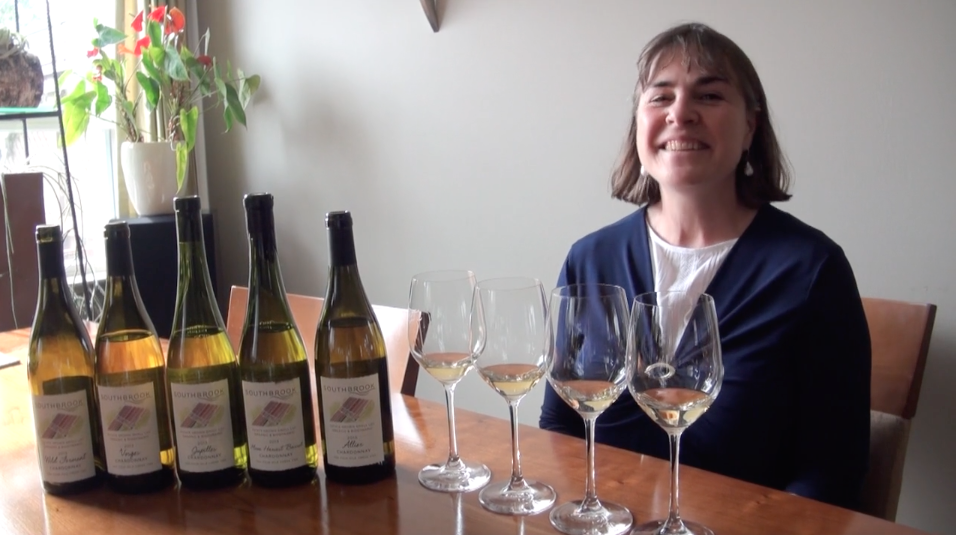Many countries have some sort of dividing line. Some are east and west, other are north and south. The difference between the two are usually things like culture, dialect, traditions or attitudes. In Germany’s wine growing regions, there are some unique differences too. In the north, places like Mosel and the Rhine, the wines tend to be Riesling-based and for good reason. They have been making wines there for thousands of years. But in places like Baden in the far south, Riesling does get a role but it’s a minor one. Instead many young winemakers are turning away from family traditions and are growing burgundy grapes such as Pinot Gris or Grauburdunger, Pinot Blanc or Weissburguner and Pinot Noir or Spätburgunder.
Since 2000 there has been a 103% increase of Pinot Gris planting in Germany, making it second after Italy for Pinot Gris plantings with most of that grown in the southern region of Baden. Grauburgunder is such an important grape that there is a symposium each year in May in the Kaiserstuhl region near Baden.
German Pinot Gris wines are often big and full throttled are due to the soil in the area. Much of it volcanic mixed with high amounts of calcium carbonate. In fact there is only one other place where you can find volcanic rocks mixed with calcium carbonate and that is Costa Rica. The Grauburgunders grown on such soil in Baden produce wines that are rich, often full bodied with layers of texture and fruit.
Let’s hope that some day soon, the world will look beyond the light and easy drinking Pinot Grigio’s of Italy and take the grape and wines a little more seriously.
Another Burgundy grape that is making some great wines in Germany is Pinot Blanc. For some reason the wine drinking public has not taking a liking to Pinot Blanc or Weisburgunder like they have with Pinot Gris. However Since 2000 there has been an 84% increase in Weisburgunder plantings and Germany is now the largest grower of Pinot Blanc in the world. It is winter hardy and can produce wines that are bright and fresh without the rich, often overpowering fattiness of Pinot Gris. Although there is a trend in Germany to picking them overripe and leaving them (I think) too long in barrel, there are also many great expressions of this grape to be found.
Pinot Noir, or Spätburgunder is the most grown grape variety in Baden. With over five thousand hectares under vine it represents about 35% of the regions total vineyard plantings. The region’s warm climate and volcanic soils make this a suitable place for growing the often fickle grape variety.
The wines produced are often as varied as what you might find in Burgundy. They can range from light, almost pale in colour, to fatter wines with finesse and complexity. Of course there are examples of Pinot Noir grown in other regions such as Ahr, Mosel, Rheingau and Pfalz, making Germany the third largest producer of Pinot Noir after France and the USA. Since 2000 there has been a 27% increase in plantings and many point to global warming as the reason why Pinot Noir can fully ripen each year.
The differences between the 13 different regions of Germany and the differences within each region are endless fascinating. It is exciting to see a county that has a land mass three times smaller than Ontario, have such a diversity of growing regions within it. The time is now to see Germany for wines other than Riesling.
 Jay Whiteley is a sommelier at large, and Wine Director at Peter Pan Bistro, who loves a good story with a wicked soundtrack, and hopes to be pouring wine into a glass near you. Follow Jay at Twitter.com/corkdork.
Jay Whiteley is a sommelier at large, and Wine Director at Peter Pan Bistro, who loves a good story with a wicked soundtrack, and hopes to be pouring wine into a glass near you. Follow Jay at Twitter.com/corkdork.








